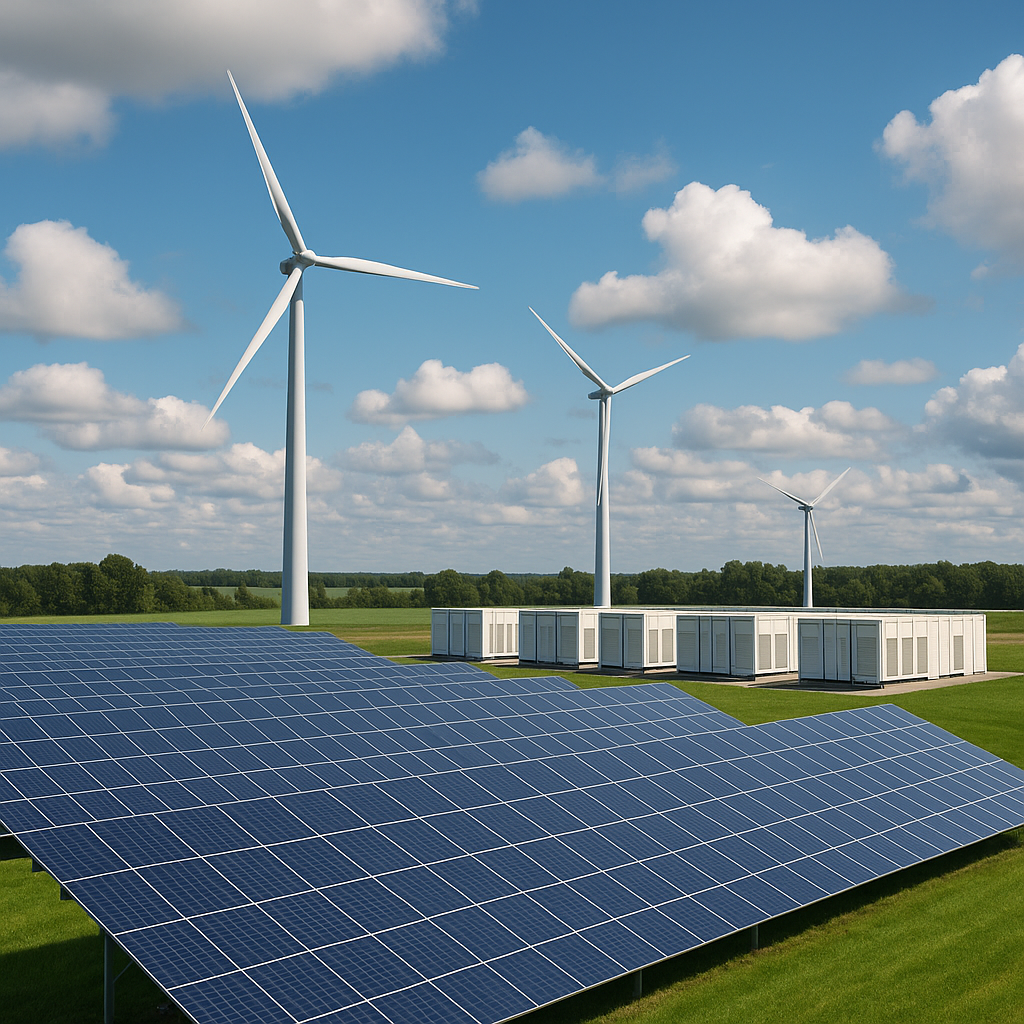Energy storage can both stabilize and disrupt fully renewable power markets
The study found that as the number of storage firms grows, this distortion declines. Two to three competing storage operators were enough to move the market close to the social optimum, indicating that moderate competition can counteract market power.

A new study warns that energy storage systems, crucial for balancing renewable-heavy power grids, can also distort market prices and reduce overall welfare when competition is limited.
The research, titled “Bidding Strategies for Energy Storage Players in 100% Renewable Electricity Market: A Game-Theoretical Approach,” was published as a preprint on arXiv. Using Denmark’s western DK1 market as a case study, the team developed a detailed game-theoretical model to analyze how storage operators bid and dispatch energy in a market supplied entirely by renewables.
Market power in renewable-only electricity systems
The authors examined how storage competition, or lack of it, shapes market outcomes in a fully renewable grid. They modeled storage firms as Cournot-type competitors choosing charge and discharge quantities to maximize profits while anticipating rivals’ moves.
Simulations showed that storage improves welfare compared to systems without storage by absorbing surplus renewable energy and supplying it during peak hours, which reduces unmet demand and curtails renewable waste. However, when the market is dominated by one or two strategic storage firms, these players tend to withhold capacity or time their output to exploit price volatility, raising consumer prices and lowering welfare.
The study found that as the number of storage firms grows, this distortion declines. Two to three competing storage operators were enough to move the market close to the social optimum, indicating that moderate competition can counteract market power.
Capacity size and diminishing welfare gains
Beyond competition, the researchers explored how increasing storage capacity affects market performance. They discovered that adding storage boosts welfare at first but yields diminishing returns once basic balancing needs are met.
In the Danish simulations, early additions of storage cut shortages and smoothed prices significantly, especially in winter peaks and summer evening hours when solar power wanes. However, once capacity reached a moderate threshold, further expansion brought smaller welfare gains.
Interestingly, splitting the same total capacity among more owners did not reduce overall welfare in a coordinated, socially optimal framework. Instead, it primarily influenced price dynamics, suggesting that ownership structure matters most under competitive bidding rather than centralized planning.
Implications for policy and market design
The authors argue that market rules must balance the need for investment incentives in storage with safeguards against the exercise of market power.
Potential solutions include market-power screening, capacity or bid limits, and well-designed compensation schemes to prevent strategic withholding while ensuring profitability for storage investors. The results also underscore the need for market operators to consider seasonal variations in demand and renewable generation, as storage’s impact on prices and reliability can differ by season
- FIRST PUBLISHED IN:
- Devdiscourse










